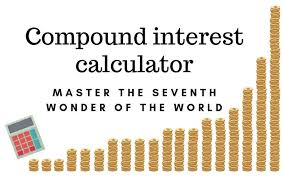Introducing the Ultimate Guide to Calculating APRs: Get ready to explore the world of finance with our Annualized Percentage Rate Calculator, designed to help you understand the ins and outs of the Annual Percentage Rate Formula. In this comprehensive Guide, we’ll unlock the secrets of calculating APRs and simplify the process for borrowers, enabling you to make well-informed decisions when it comes to loans and credit cards. Stay tuned for a deep dive into the fascinating realm of Annual Percentage Rates!
APR Calculator
Results
- Real APR:
- Amount Financed:
- Upfront Out-of-Pocket Fees:
- Payment as per payback:
- Total of Payments:
- Total Interest:
- All Payments and Fees:
What is APR – Annual Percentage Rate
Have you ever taken out a loan or used a credit card and wondered what that “APR” number means? APR, or the Annual Percentage Rate, is a key factor in financial decisions that can have a big impact on your overall costs. In this article, we’ll introduce the basics of APR and why it matters.
What is APR?
APR is a percentage that represents the total cost of borrowing money over the course of a year. This includes not only the interest rate but also any fees or charges associated with the loan or credit card. APR helps you compare the true costs of different borrowing options.
Why is APR important?
APR is important because it gives you a clear picture of the true cost of borrowing money. It’s easy to be tempted by a loan or credit card with a low interest rate, but if that low rate is accompanied by high fees, the APR could end up being much higher than you initially thought. By comparing APRs, you can make more informed decisions about which borrowing options are truly the most cost-effective.
What’s the Difference Between Annual Percentage Rate and Interest Rate?
When looking at financial products like credit cards, personal loans, and mortgages, you might notice two numbers associated with them: the interest rate and the APR. While they may seem similar, the interest rate and APR have distinct differences that can have a significant impact on the overall cost of borrowing. In this article, we’ll explore the differences between APR and interest rate, and why it’s important to understand them.
What is interest rate?
The interest rate is simply the cost of borrowing money expressed as a percentage. For example, if you borrow $10,000 at an interest rate of 5%, you’ll need to pay back $10,500 ($10,000 + 5% of $10,000) over the course of the loan. Interest rate is a simple calculation that doesn’t take into account any fees or other charges associated with the loan.
What is Annual Percentage Rate?
The APR, or Annual Percentage Rate, is a more comprehensive measure of the cost of borrowing money. APR takes into account not only the interest rate but also any fees, points, or other charges associated with the loan. This means that the APR is typically higher than the interest rate. The APR gives you a more accurate idea of the total cost of borrowing.
Why is it important to understand the difference?
Understanding the difference between interest rate and APR is important because it can impact the overall cost of borrowing. For example, if you’re comparing two loans with the same interest rate but different APRs, the loan with the higher APR will cost you more in the long run due to the additional fees and charges. It’s important to compare APRs when considering different borrowing options.
In conclusion, while the interest rate and APR may seem similar, they have distinct differences that can impact the overall cost of borrowing. Interest rate is simply the cost of borrowing money expressed as a percentage, while APR takes into account other fees and charges associated with the loan. By understanding the difference between the two, you can make more informed decisions about borrowing and potentially save money in the long run.
How to calculate Annual Percentage Rate – Annual Percentage Rate Formula
While APR can be a complex calculation, understanding how it is calculated and how to use the formula can help you make more informed borrowing decisions. In this article, we’ll provide an example of how to calculate APR and the formulas involved.
Formula for Calculating APR: The formula for calculating APR is:
APR = [(Total Interest / Total Amount Borrowed) x Number of Days in a Year] x 100
Example: Let’s say you borrow $10,000 for 12 months at an interest rate of 6%. You also have a loan origination fee of $200. To calculate the APR, you would first need to calculate the total interest and total amount borrowed:
Total Interest = $10,000 x 6% = $600 Total Amount Borrowed = $10,000 + $200 = $10,200
Next, you would use the formula to calculate the APR:
Annual Percentage Rate = [(Total Interest / Total Amount Borrowed) x Number of Days in a Year] x 100 APR = [($600 / $10,200) x 365] x 100 APR = 6.78%
So the APR for this loan would be 6.78%.
Why is Calculating APR Important?
Calculating APR is important because it gives you a more accurate idea of the true cost of borrowing money. APR takes into account not only the interest rate, but also any additional fees or charges associated with the loan. By comparing APRs for different borrowing options, you can make more informed decisions about which option is truly the most cost-effective.
Factors that Affect APR Calculation:
There are several factors that can impact the APR calculation for different types of loans. These include:
Interest Rate: The interest rate is the percentage of the loan amount that you will pay in interest over the life of the loan. A higher interest rate will result in a higher APR.
Fees: Loans may come with additional fees, such as origination fees or closing costs. These fees will be included in the Total Interest calculation and will impact the APR.
Loan Term: The length of the loan term can impact the APR. A longer loan term may result in a lower monthly payment, but a higher APR due to the extended period of time over which interest accrues.
Repayment Schedule: The repayment schedule, such as monthly or bi-weekly payments, can impact the APR calculation as well. More frequent payments may result in a lower APR due to less time for interest to accrue.
Limitations of the Annual Percentage Rate
While APR is a useful tool for comparing different borrowing options, it also has its limitations. In this article, we’ll explore the limitations of the APR and what you need to know.
Limitation #1: Doesn’t account for changes in interest rates The APR assumes a constant interest rate over the course of the loan, but in reality, interest rates can fluctuate. If interest rates rise, the APR will not reflect this increase, potentially leading to unexpected costs.
Limitation #2: Doesn’t account for changes in fees The APR also assumes a constant fee structure over the course of the loan, but fees can change. If fees increase over the course of the loan, the APR will not reflect this increase, potentially leading to unexpected costs.
Limitation #3: Doesn’t account for prepayment penalties Many loans come with prepayment penalties, which are fees charged for paying off the loan early. The APR doesn’t take prepayment penalties into account, so if you plan to pay off your loan early, the APR may not accurately reflect the total cost of the loan.
Limitation #4: Doesn’t account for non-credit costs Finally, the APR doesn’t account for non-credit costs, such as closing costs on a mortgage or taxes and insurance on a car loan. These costs can add up and increase the total cost of borrowing beyond what the APR indicates.
In conclusion, while the APR is a useful tool for comparing different borrowing options, it also has its limitations. It assumes a constant interest rate and fee structure over the course of the loan, doesn’t take prepayment penalties into account, and doesn’t account for non-credit costs. By understanding these limitations, you can make more informed borrowing decisions and potentially save money in the long run.
In summary, understanding the limitations of the APR is an important step in making informed financial decisions. By exploring the shortcomings and risks of relying solely on the annual percentage rate, this article aims to help readers understand the importance of considering all factors when borrowing money.
Types of APRs
Annual Percentage Rates (APRs) are a common term in the world of finance, but did you know that there are different types of APRs? Understanding the different types of APRs can help you make more informed borrowing decisions and potentially save money in the long run. In this article, we’ll explore the various types of APRs and what they mean.
Type #1: Purchase APR- The Purchase APR is the interest rate charged on purchases made using a credit card. This is the most common type of APR and is often advertised by credit card companies as an introductory rate.
Type #2: Balance Transfer APR -The Balance Transfer APR is the interest rate charged on the amount transferred from one credit card to another. This type of APR can be lower than the Purchase APR, making it an attractive option for those looking to consolidate credit card debt.
Type #3: Cash Advance APR -The Cash Advance APR is the charged on cash advances taken out using a credit card. This type of APR is often much higher than the Purchase APR, making it a less desirable option.
Type #4: Penalty APR- The Penalty APR is the interest rate charged when you violate the terms of your credit card agreement, such as by making a late payment or going over your credit limit. This type of APR can be much higher than the Purchase APR, making it important to avoid incurring penalties.
Type #5: Introductory APR- An Introductory APR is a temporary, lower interest rate offered by lenders as an incentive for new borrowers. This type of APR can be beneficial for those looking to save money in the short term.
APR vs. APY
Annual Percentage Rate (APR) and Annual Percentage Yield (APY). While they may seem similar, APR and APY have distinct differences that can impact your financial decisions. In this article, we’ll explore the differences between APR and APY and what you need to know.
What is APR?
As we know, APR is the annual rate charged for borrowing money, including any fees or charges associated with the loan. It represents the true cost of borrowing over the course of a year.
What is APY?
APY, on the other hand, is the annual rate of return on an investment or savings account, including any interest earned on the principal amount plus any interest earned on previous interest. APY takes into account compounding interest, meaning the interest earned is reinvested and earns additional interest over time.
How are they different?
The main difference between APR and APY is that APR is a measure of the cost of borrowing money, while APY is a measure of the return on an investment or savings account. APR includes fees and charges, while APY includes compounding interest. When comparing financial products, it’s important to consider both APR and APY to get a complete picture of the true cost or return.
Why is it important to understand the difference?
Understanding the difference between APR and APY is important because it can impact your financial decisions. If you’re considering a loan, the APR will give you a clear picture of the true cost of borrowing. If you’re considering a savings account, the APY will give you a clear picture of the potential return on your investment. By understanding both, you can make more informed decisions.
In conclusion, APR and APY are two important terms to understand in financial decisions. APR represents the cost of borrowing money, while APY represents the potential return on an investment or savings account. Understanding the differences between the two can help you make more informed decisions and potentially save or earn more money in the long run.
In summary, exploring the distinctions and impacts of APR and APY in financial decisions is important for making informed financial decisions.
What is a good Annualized Percentage Rate for a credit card
Credit card APRs can vary widely, making it difficult to know what a “good” APR is. A low APR can save you money on interest, while a high APR can lead to unexpected costs. In this article, we’ll explore what constitutes a good APR for a credit card and the factors involved.
What is APR for Credit Cards?
APR for credit cards is the annual rate of interest charged on outstanding credit card balances. The APR can vary depending on the credit card company, the type of card, and the borrower’s credit score.
What is a Good APR for a Credit Card?
A good APR for a credit card is typically around 15% or lower. However, some credit cards may offer introductory APRs as low as 0%, while others may have higher APRs for those with lower credit scores. It’s important to note that a good APR for one person may not be the same for another, as it depends on individual circumstances.
Factors that Affect Credit Card APRs:
There are several factors that can impact credit card APRs, including:
Credit Score: Your credit score is a key factor in determining your credit card APR. Those with higher credit scores may be offered lower APRs, while those with lower scores may be offered higher APRs.
Type of Card: Different types of credit cards may come with different APRs. For example, rewards cards may have higher APRs than basic cards.
Credit Card Company: Different credit card companies may have different APRs for their cards.
Economic Factors: Economic factors, such as inflation or changes in interest rates, can impact credit card APRs.
How to Find the Best Credit Card APR for You:
To find the best credit card APR for you, it’s important to shop around and compare different options. Look for cards with low APRs and favorable terms, such as no annual fees or rewards programs. Additionally, working to improve your credit score can help you qualify for better APRs in the future.
In conclusion, a good APR for a credit card is typically around 15% or lower, but can vary depending on individual circumstances. Factors that can impact credit card APRs include credit score, type of card, credit card company, and economic factors. By shopping around and comparing different options, you can find the best for your needs and potentially save money on interest.
Improving Your Credit Can Get You Lower Rates
Your credit score can have a significant impact on your financial life, including the interest rates you’re offered on loans and credit cards. A good credit score can help you secure lower rates and save money over time. In this article, we’ll explore the connection between credit and interest rates and how you can improve your credit to get better rates.
The Connection Between Credit and Interest Rates: Lenders use your credit score as a way to determine how risky it is to lend you money. The higher your credit score, the less risky you appear, and the more likely you are to be offered lower interest rates on loans and credit cards. Conversely, a lower credit score can make you appear riskier and result in higher interest rates.
Improving Your Credit: Improving your credit can help you secure lower interest rates on loans and credit cards. Here are some tips for improving your credit:
Pay Bills on Time: Late payments can have a significant negative impact on your credit score. Paying bills on time, even if it’s just the minimum payment, can help you maintain a good credit score.
Reduce Debt: High levels of debt can negatively impact your credit score. Paying down debt, even if it’s just a little at a time, can help you improve your credit score over time.
Check Your Credit Report: Errors on your credit report can negatively impact your credit score. Checking your credit report regularly can help you catch errors and have them corrected.
Use Credit Responsibly: Using credit responsibly, such as keeping balances low and paying off balances in full each month, can help you maintain a good credit score and potentially improve it over time.
The Benefits of Lower Interest Rates:
Securing lower interest rates on loans and credit cards can have significant benefits, including:
Saving Money: Lower interest rates mean you’ll pay less in interest over the life of the loan or credit card.
Lower Monthly Payments: Lower interest rates can result in lower monthly payments, making it easier to manage your finances.
Improved Credit Score: Making on-time payments and reducing debt can help you improve your credit score, potentially leading to even lower interest rates in the future.
In conclusion, improving your credit can help you secure lower interest rates on loans and credit cards, potentially saving you money over time. By paying bills on time, reducing debt, checking your credit report, and using credit responsibly, you can improve your credit score and potentially qualify for better rates.

Annualized Percentage Rate (APR) Calculator
The Annualized Percentage Rate (APR) is a crucial metric in the world of finance. It provides a comprehensive view of the true cost of borrowing, taking into account interest, fees, and other charges. To assess the financial landscape more effectively, an APR calculator simplifies the process, allowing individuals and businesses to make informed decisions. In this article, we’ll explore the significance of the Annualized Percentage Rate, the Annual Percentage Rate formula, and the value of calculating APRs.
Decoding the Annual Percentage Rate (APR):
The Annual Percentage Rate, or APR, is a standardized way of expressing the cost of borrowing. It factors in not just the nominal interest rate, but also any fees and costs associated with a loan or credit product. The APR provides borrowers with a clearer picture of what they’ll actually pay over the life of the loan.
Understanding the Annual Percentage Rate Formula:
The Annual Percentage Rate is calculated using a formula that combines the nominal interest rate, fees, and other charges. The specific formula can vary slightly depending on the nature of the loan or credit. However, the general formula for calculating APR is:
APR = [(Total Interest + Fees) / Principal Loan Amount] x (365 / Number of Days in Loan Term) x 100
This formula factors in the total interest and fees paid over the life of the loan, the principal loan amount, and the duration of the loan.
Why Use an Annualized Percentage Rate Calculator?
An APR calculator simplifies the process of calculating this critical financial metric. Here’s why it’s essential:
Accuracy: Calculating APR manually can be complex, especially when loans have variable interest rates or irregular fee structures. An APR calculator eliminates errors and provides precise results.
Efficiency: An APR calculator provides quick results, saving time and effort in performing the calculations manually.
Comparison: The APR calculator enables borrowers to compare loan and credit offers more effectively. It allows them to evaluate the real cost of borrowing and select the most cost-effective option.
Transparency: For borrowers, an APR calculator offers transparency by revealing the actual cost of a loan, ensuring they fully understand the financial commitment.
Using an APR Calculator:
Here’s a simple guide on how to use an APR calculator:
Input Information: Gather data on the nominal interest rate, any fees, and the principal loan amount.
Specify Loan Term: Determine the length of the loan or credit term.
Calculate APR: Enter the data into the APR calculator, and it will provide you with the APR, expressed as a percentage.
Conclusion:
The Annualized Percentage Rate (APR) is a powerful tool for understanding the true cost of borrowing. Whether you’re applying for a mortgage, credit card, or any other form of credit, knowing the APR helps you make informed financial decisions. The Annual Percentage Rate formula provides a standardized way of calculating this essential metric. Using an APR calculator simplifies the process, ensuring accuracy and efficiency in assessing loan and credit offers. By leveraging these tools, you can navigate the financial landscape more effectively, choose the most cost-effective options, and make decisions that align with your long-term financial goals.
FAQ on Annualized Percentage Rate (APR)
1. What is APR (Annualized Percentage Rate)?
- APR stands for Annualized Percentage Rate. It is a standardized metric used to express the cost of borrowing, including interest, fees, and other charges, over a one-year period. It provides borrowers with a more accurate understanding of the total cost of a loan.
2. How is the Annualized Percentage Rate (APR) different from the nominal interest rate?
- The nominal interest rate is the stated interest rate on a loan, while the APR encompasses not only the nominal interest rate but also any associated fees and costs. The APR provides a more comprehensive view of the total cost of borrowing.
3. What is the Annual Percentage Rate Formula?
- The formula for calculating the Annual Percentage Rate (APR) is: APR = [(Total Interest + Fees) / Principal Loan Amount] x (365 / Number of Days in Loan Term) x 100. This formula takes into account the total interest and fees paid, the principal loan amount, and the duration of the loan.
4. Why is it essential to calculate APRs?
- Calculating APRs is essential because it allows borrowers to make informed decisions about loans and credit products. It provides transparency and helps individuals understand the actual cost of borrowing. By comparing APRs, borrowers can choose the most cost-effective financing option.
5. How does an Annualized Percentage Rate (APR) calculator work?
- An Annualized Percentage Rate (APR) calculator simplifies the process of calculating APR by automating the formula. Users input data such as the nominal interest rate, fees, principal loan amount, and loan term. The calculator then provides the APR as a percentage.
6. Can APRs vary for different types of loans or credit products?
- Yes, APRs can vary depending on the type of loan or credit product. For example, mortgages, credit cards, personal loans, and auto loans may have different fee structures, terms, and interest rates that influence the APR.
7. Why is APR important when shopping for loans or credit cards?
- APR is important because it helps consumers compare loan and credit card offers accurately. It ensures that they understand the true cost of borrowing and can choose the most cost-effective option based on their financial needs.
8. Can the APR change over time for variable-rate loans or credit cards?
- Yes, for variable-rate loans or credit cards, the APR can change over time based on fluctuations in the benchmark interest rate or other factors specified in the loan or credit agreement.
9. Are there any loans or credit products that are not required to disclose APRs?
- Most loans and credit products are required to disclose APRs to borrowers. However, some exceptions may apply, such as short-term payday loans or specific types of business loans.
10. Can APRs be negotiated or modified by borrowers?
In some cases, borrowers may have limited flexibility to negotiate APRs, especially for standard loans like mortgages. However, for credit cards, personal loans, or certain business loans, borrowers may be able to negotiate terms with lenders or financial institutions.
11. Can you use an APR calculator for various loan types?
Yes, an APR calculator can be used for various loan types, provided you have the necessary information, including the nominal interest rate, fees, loan amount, and loan term.
Annualized Percentage Rate Calculator – Calculating aprs – Annual Percentage Rate Formula
Legal Notices and Disclaimer
All Information contained in and produced by the ModernCalculators.com is provided for educational purposes only. This information should not be used for any Financial planning etc. Take the help from Financial experts for any Finace related Topics. This Website will not be responsible for any Financial loss etc.





